Compare similar ETFs
 ESG Aware MSCI USA Small-Cap ETF
ESML
ESG Aware MSCI USA Small-Cap ETF
ESML
 ESG Aware MSCI USA ETF
ESGU
ESG Aware MSCI USA ETF
ESGU
 ESG U.S. Stock ETF
ESGV
ESG U.S. Stock ETF
ESGV
 ESG Aware MSCI EAFE ETF
ESGD
ESG Aware MSCI EAFE ETF
ESGD
 ESG Aware MSCI EM ETF
ESGE
ESG Aware MSCI EM ETF
ESGE
The iShares ESG Aware MSCI USA Small-Cap ETF (the “Fund”) seeks to track the investment results of an optimized index designed to produce investment results comparable to a capitalization weighted index of small-capitalization U.S. companies, while reflecting a higher allocation to those companies with favorable environmental, social and governance (“ESG”) profiles (as determined by the index provider).
$42.02
 ESG Aware MSCI USA Small-Cap ETF
ESML
ESG Aware MSCI USA Small-Cap ETF
ESML
 ESG Aware MSCI USA ETF
ESGU
ESG Aware MSCI USA ETF
ESGU
 ESG U.S. Stock ETF
ESGV
ESG U.S. Stock ETF
ESGV
 ESG Aware MSCI EAFE ETF
ESGD
ESG Aware MSCI EAFE ETF
ESGD
 ESG Aware MSCI EM ETF
ESGE
ESG Aware MSCI EM ETF
ESGE
| Market Cap The market value of the company. It's calculated by multiplying the share price by the number of outstanding shares. | $6.72 Billion | |
| Dividend Yield Yearly payout to shareholders per share. The percentage indicates the payout in relation to the share price. | 1.5 % | |
| Beta Indicates the relationship between the price performance of a share and the market. | 1.1541 | |
| P/E Ratio Ratio between share price and earnings per share. A low ratio could indicate that the stock is undervalued or investors aren't expecting high growth. A high ratio could indicate that the stock is overvalued or investors are expecting high growth. | 64.41 | |
| Negative P/E Ratio a negative P/E ratio shows that the company is not profitable, and it shows how many years it would take the company to lose its entire market capitalisation if it did not change anything | -118.63 | |
| Profitable Companies | 81 | |
| PEG The ratio between the P/E ratio and the growth rate of the company's earnings per share in the last twelve months. A lower PEG could mean that a stock is undervalued. | 235.5 | |
| Price to Sales Ratio Market cap divided by the revenue in the most recent year. | 4.29 | |
| Price to Book Ratio Price to Book Ratio is the Market cap divided by the Book value of the company | 3.66 |
| Enterprise Value to EBIT Enterprise Value divided by EBIT | -1.59 | |
| Enterprise Value to Revenue Enterprise value divided by revenue | 40.14 | |
| Total Debt to Enterprise Value Total debt divided by enterprise value | 0.21 | |
| Debt to Equity A higher ratio indicates a higher risk. However, the ratio is difficult to compare between industries where common amounts of debt vary. | NaN | |
| Profit Margin Net income divided by revenue of the last 4 quarters. It indicates the company's profitability. | -368.93% | |
| Quarterly Earnings Growth (YoY) The rate at which the company's net income has increased to the same quarter one year ago. | - | |
| Return on Equity Equity divided by market cap. | 644.54% | |
| Return on Assets Indicates a company's profitability in relation to its total assets. | 319.65% | |
| Return on Invested Capital Return on invested capital (ROIC) is net income after dividends divided by the sum of debt and equity. It shows how effective a company is at turning capital invested by shareholders and other debtholders into profits. | 454.44% |
| Finance | 14.6% |
| Healthcare | 13.8% |
| Technology | 13.7% |
| Industrials | 13.0% |
| Consumer Discretionary | 10.2% |
| Other | 4.6% |
| Consumer Staples | 3.3% |
| Energy | 3.1% |
| Materials | 3.0% |
| Utilities | 2.3% |
| Real Estate | 1.9% |
| Telecommunications | 0.9% |
| Consumer Cyclical | 0.3% |
| N/A | 15.3% |
| Micro Cap | 1% |
| Small Cap | 13% |
| Mid Cap | 70% |
| Large Cap | 16% |
| Mega Cap | 0% |

USFD - Retail Trade

CASY - Retail Trade

JHG - Finance and Insurance

GWRE - Information

IBKR - Finance and Insurance
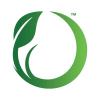
SFM - Retail Trade

TPR - Manufacturing

FTI - Professional, Scientific, and Technical Services
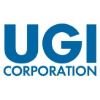
UGI - Utilities

INGR - Manufacturing
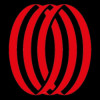
JLL - Real Estate and Rental and Leasing

OGS - Utilities
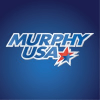
MUSA - Retail Trade

REXR - Finance and Insurance

FLEX - Manufacturing

AXS - Finance and Insurance

ZWS - Manufacturing

RRC - Mining, Quarrying, and Oil and Gas Extraction
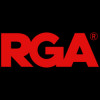
RGA - Finance and Insurance
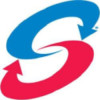
FIX - Construction

NFG - Utilities